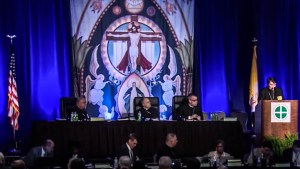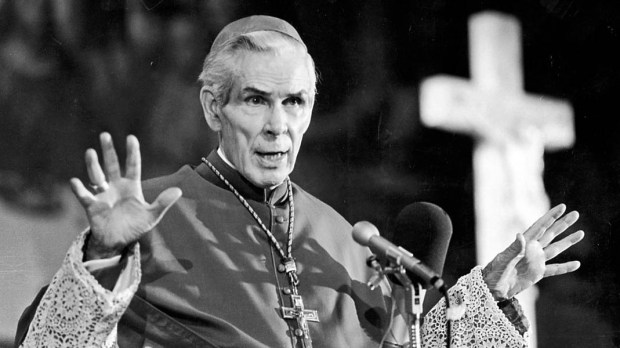How often we easily distracted humans miss the important things because we’ve given our attention to something that’s less meaningful but more entertaining.
The truths of the faith are inspiring and life-giving, but if presented the wrong way—as a dull, dry series of propositions—they won’t appeal to anyone. It’s the perpetual challenge of the Church to present the Gospel message in ways that a given age will embrace.
Pope St. John Paul II spoke of “the utilization of new means of transmitting the message” in his great work on catechesis, Catechesi Tradendae. Marshall McLuhan famously said that “the medium is the message,” and the history of the Church provides us with a number of examples of teachers who instinctively knew that, and used unique methods to present the truth to the world.
One comes to us from all the way back in the 4th century. While he wrote theological treatises and works of scriptural exegesis as his contemporaries did, St. Ephrem the Syrian was well-known for writing hymns as well. His hymns were catechetical in nature, written to teach the truths of the faith in lyrical form. This was not merely an aesthetic choice, but also a deliberate tactic. Heretical groups like the Manichaeans had taken to writing hymns to promote their beliefs, and their popularity threatened the true faith. He even wrote many of his homilies in verse!
To give a fictional example: in the film Going My Way, Bing Crosby’s Father Charles O’Malley is trying to explain to a young couple the role that music plays in his life as a priest. Though he left playing piano in nightclubs for celebrating Mass, Father O’Malley wishes he could still use music to get across his message. “You mean sing your sermons?” asks the young woman. “Something like that,” he responds.
Not only does Father O’Malley’s song move the young couple to get married, but his use of music further inspires the young rapscallions of the parish to turn from petty theft to forming a boys’ choir.
Speakers’ Corner in London’s Hyde Park is a famous venue for public debate and discussion. In the 1920s, Frank Sheed and other members of the Catholic Evidence Guild entered the fray, holding disputations with anyone who would care to challenge them, and presenting forceful arguments for the truth of the Catholic faith.
Venerable Archbishop Fulton J. Sheen hosted a weekly primetime television show, Life Is Worth Living. With only a blackboard to accompany his trademark dramatic flair and Irish wit, Archbishop Sheen was able to explain complex theological ideas in an accessible way. His show was a hit: not only did it attract millions of viewers, but it won him an Emmy award. (At the ceremony, Archbishop Sheen thanked “my writers: Matthew, Mark, Luke, and John.”)
In recent years, with the explosion of the internet, many priests and evangelists have taken to the likes of YouTube, Twitter, and other websites to present the faith. Examples could abound here, but Bishop Robert Barron’s Word on Fire ministry has created an especially dynamic combination of articles and video series to proclaim the Gospel in an engaging way. Whereas previous generations might produce a lengthy tome on the problem of evil, Bishop Barron can discuss the topic in a five-minute video in a way that is neither trite nor overly academic.

Read more:
Bishop Barron: The question behind the question
This intentional seeking of the ideal means and moments for evangelization has been present in Catholicism from the beginning. From St. Peter preaching to the huge crowds gathered for the feast of Pentecost to St. Paul debating the philosophers in the forums of the cities of Greece, Catholics have always known that you have to go where the people are, and engage them on their own terms. With technologies like virtual reality on the horizon, what that might mean for the future is anybody’s guess. But the Church will be there, spreading the Good News.
Read more:
St. Ephrem the Syrian: “The Harp of the Holy Spirit”

